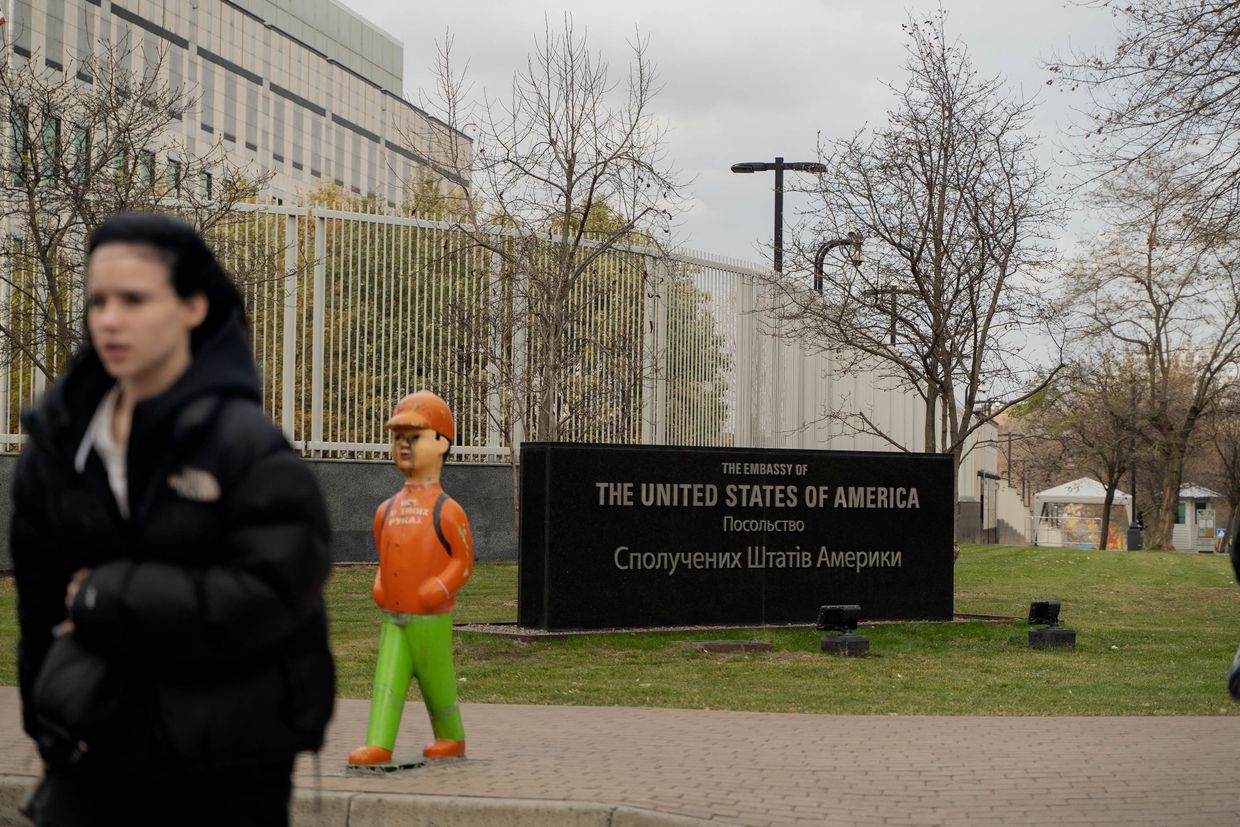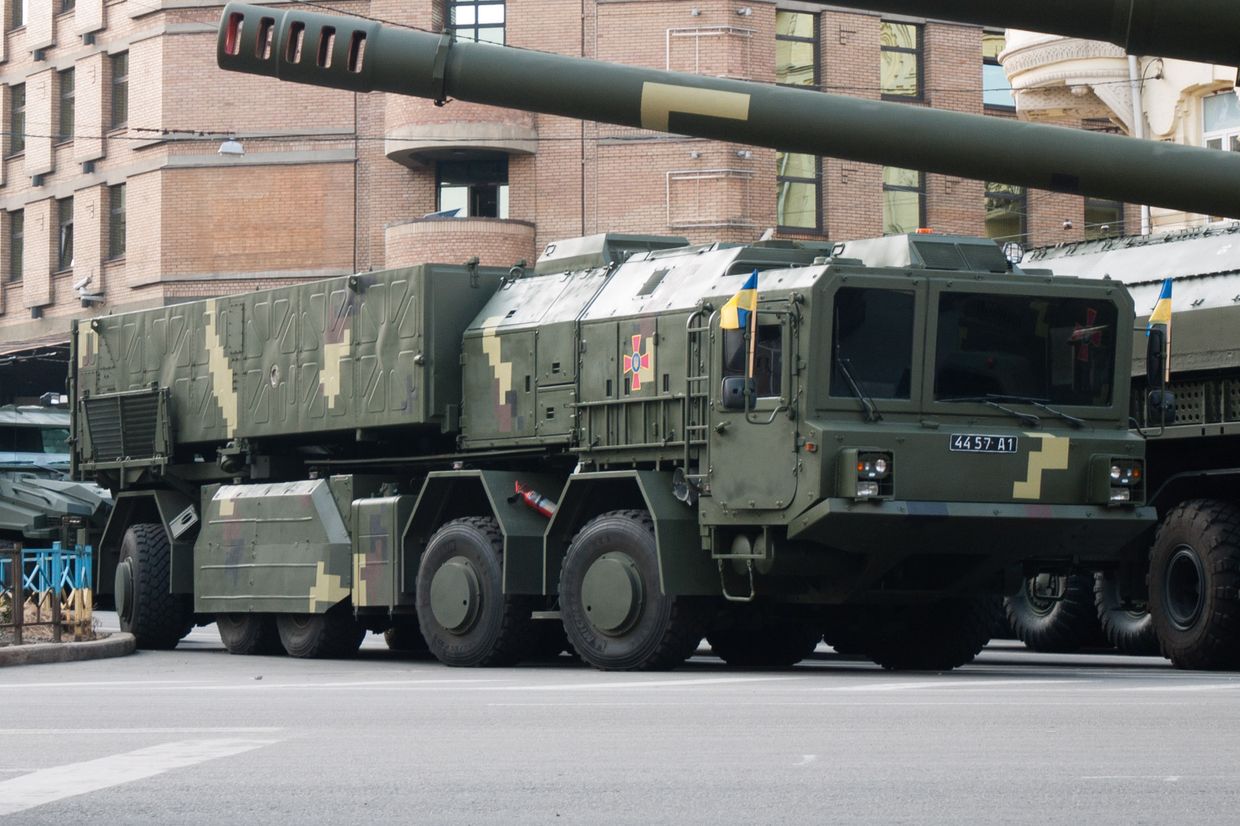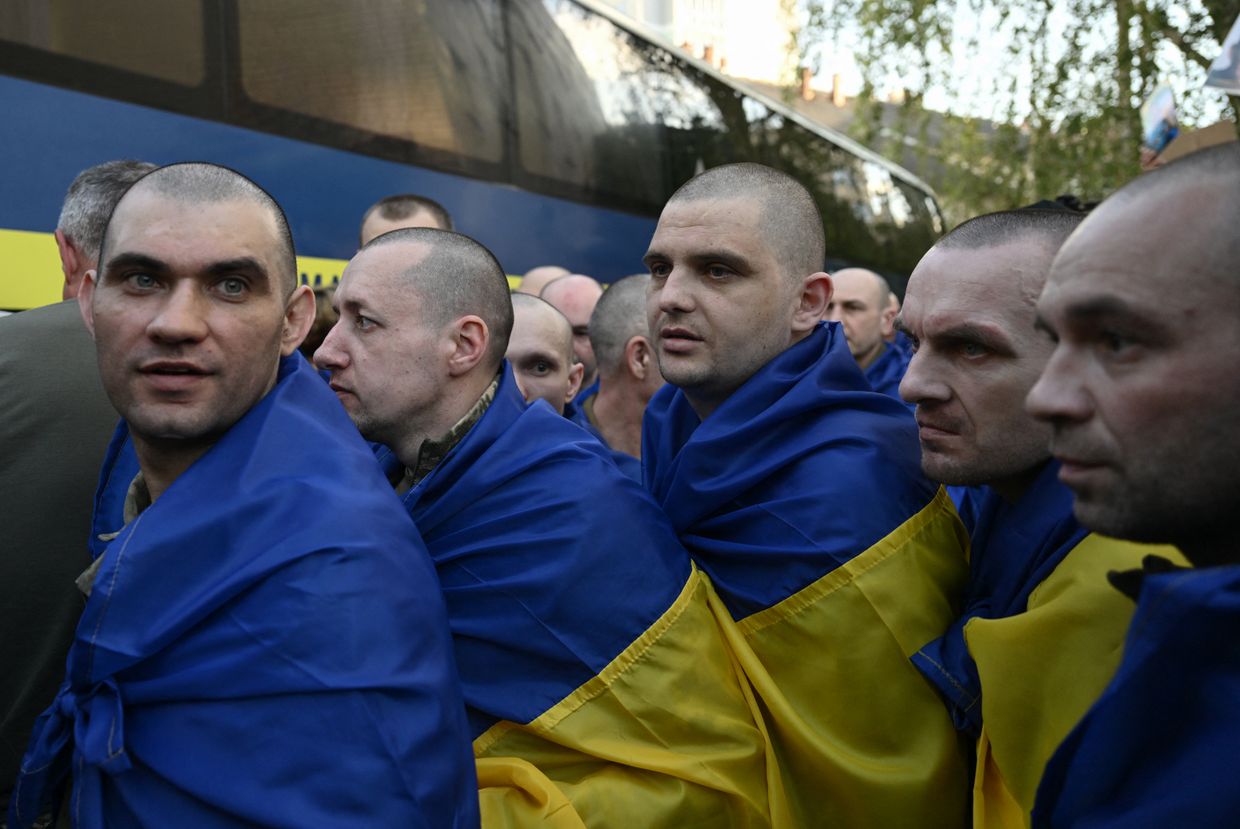Ukrainians woke up on Nov. 20 to a message that a number of foreign embassies were closing their Kyiv offices — a stark reminder of the departure of foreign diplomats from Kyiv days before the start of the all-out war.
The U.S. Embassy in the capital said it had received "specific information" about a "potential significant air attack" planned for that day.
"Out of an abundance of caution, the Embassy will be closed, and Embassy employees are being instructed to shelter in place," the statement read.
The announcement came in the wake of what appeared to be Ukraine's first successful strike of a military target inside Russia using the U.S.-supplied ATACMS missiles.
After depicting such a move as crossing another "red line" the Kremlin had drawn, Russian President Vladimir Putin said his country would respond. A mass attack using cruise and ballistic missiles, as well as drones, was the most expected outcome.
Throughout the full-scale invasion of Ukraine, the Kremlin has repeatedly laid down red lines, the crossing of which it has said could provoke various responses, sometimes invoking the threat of nuclear weapons.
In an attempt to deter Ukraine's Western allies from further arming Kyiv, the Kremlin issued warnings related to the supply of Patriot air defense systems, F-16 fighter jets, and ATACMS to be used in occupied areas of Ukraine, among others.
Despite crossing multiple red lines on multiple occasions, Russia has yet to follow through with any of its threats.
What has spooked some observers about the latest crossing is that it happened just hours before Putin approved the updated principles of Russia's nuclear deterrence policy.
One of the provisions of the new policy states that "aggression against the Russian Federation and its allies by a non-nuclear state with the support of a nuclear state" could justify a nuclear strike — Ukraine using ATACMS to strike deep inside Russia would appear to qualify.
Shortly after the U.S. Embassy issued its warning, the Spanish, Greek, and Italian embassies followed suit, and the news quickly spread on Ukrainian Telegram channels.
Most of them urged that on this day, it's especially worth taking shelter during air raid alerts.
In central Kyiv, there were mixed responses to the reports. Nina Stupak, 83, said she hadn't seen the specific warning from the U.S. embassy, but her neighbors had called her to tell her about it.
"Of course, I am really scared about this threat, and especially I am worried about the lives of my children and grandchildren," she told the Kyiv Independent while out shopping in the city's Podil district.
Petro Karpenko, an 18-year-old student, was more blasé. "I am not worried because there is a stable situation in Kyiv," he told the Kyiv Independent.
"There have already been massive attacks on Kyiv from May to July. I've got used to it more or less."
Shortly after midday, Andrii Kovalenko of Ukraine's National Security and Defense Council, repeated an appeal he issued earlier in the morning, stating that Russian mass aerial attacks have been in the planning for months, and the embassy closures shouldn't mean Ukrainians act any differently.
"Ukrainians already understand the situation — you need to plan your time and prepare safe places for yourself in case of alarm, calculate the route and the time it takes to reach these safe places can be reached," he said in a post on Telegram.
Kovalenko, who heads the counter-disinformation department, added that Russia was trying to exploit the situation by "stoking panic against the backdrop of the closing of embassies."

But the warnings weren't just limited to diplomats and Telegram channels — Ukrainian soldiers were also alerted about a potential Russian mass ballistic missile attack, a source in the Ukrainian military told the Kyiv Independent.
"According to intelligence reports, a massive missile attack using ballistic missiles is possible today," a message received by Ukrainian soldiers said.
When asked about the alert, at least one Ukrainian soldier was unmoved by the apparent threat.
"In case anyone hasn't noticed, we are at war with Russia," Lieutenant Colonel Bohdan Krotevych, chief of staff of Azov 12th Special Forces Brigade, told the Kyiv Independent.
"Yesterday was no different from the days before it or those to come. Russia doesn't need to adopt any doctrines to use one weapon or another. This topic isn't even worth discussing."
Further stoking tensions were reports in Ukrainian media about rumors of Russia testing new weapons as part of their planned retaliation.
"According to unconfirmed information, it is an RS-26 'Rubezh' intercontinental (ballistic) missile," one outlet wrote in an article published at 1:45 p.m.
At 1:49 p.m., the air raid sirens sounded in Kyiv and several other oblasts. An almost everyday occurrence, after more than two-and-a-half years of full-scale war, they rarely cause anyone to blink, let alone head to a shelter.
But today was different — many of those on the streets changed direction and quickened their pace, heading to the nearest metro station, the safest place to be during an attack." Usually, I do not go down to the metro or shelter because I am not really worried about attacks," 24-year-old Andriy Bohdantsov told the Kyiv Independent from the underground metro station where hundreds of people had gathered.
Many of those on the streets changed direction and quickened their pace, heading to the nearest metro station, the safest place to be during an attack.
"But today, due to the U.S. Embassy warning, I've decided to come here.
"For me, this situation today is like a flashback of past events, specifically, when people were saying that war wouldn't start, but it had started," he added, referring to the days leading up to the launch of the full-scale invasion in 2022 when constant U.S. intelligence assessments warning of an imminent attack were played down by Ukrainian authorities.
The closure of the U.S. Embassy in Kyiv on Feb. 14, 2022, ten days before the start of Russia's full-scale invasion, has been engraved in the memories of many Ukrainians who were left to witness the unfolding war.
Telegram channels that monitor Russian missile launches reported two ballistic missiles heading for Kyiv, but shortly after said they had "ceased to exist" — either being intercepted, or being fake launches using electronic warfare (EW).
At 2:21 p.m. the all clear sounded, and hundreds of people filed out of the metro to resume their day as best they could.
At exactly the same time, Kovalenko's warnings about a Russian disinformation campaign aimed at stoking panic in Kyiv appeared to be confirmed.
Ukraine's military intelligence (HUR) warned on its Telegram channel that Russian intelligence services were amplifying the panic by spreading fake messages in messengers and social media about the supposedly upcoming attack.
The agency showed one message about the attack spread in messengers and social media, saying it was "fake and contains grammatical errors typical for Russian psychological operations."
"The enemy, unable to subjugate Ukrainians by force, resorts to measures of intimidation and psychological pressure on society. Please be vigilant," the statement read.
"Do not ignore air raid signals—it is safer to wait in a shelter. However, we urge you not to panic."

The Kyiv Independent's military source clarified that the aerial strike threat remains relevant, but Russia is carrying out a parallel psychological operation to sow panic.
At around 3 p.m., Ukraine's Foreign Ministry released a statement criticizing the decision of Western embassies to issue warnings and close earlier in the day, describing the moves as "information overreaction."
"On this 1,001st day of the full-scale invasion, the threat of Russian strikes remains just as relevant as it has been for the past thousand days," Foreign Ministry spokesman Heorhii Tykhyi said.
Around the same time, Telegram monitoring channels reported seven Russian Tu-95 bombers were redeploying to the Engels airbase, a possible indication of preparation for an attack.
At 7:46 p.m., other channels reported they had been joined there by a further two Tu-95s.
Around an hour later, the U.S. Embassy it had "resumed services following a temporary shelter-in-place suspension earlier today."
"We continue to encourage U.S. citizens to remain vigilant, monitor official Ukrainian sources for updates, and be prepared to shelter in place if an air alert is announced," it added.
At the time of writing, 10:00 p.m., there have been no further air raid alerts in Kyiv, no further embassy warnings, and little further information on the Russian bombers, and even less on what their plans for attack might be.
Martyniuk Oksana, a 26-year-old mother currently on maternity leave, told the Kyiv Independent that given all the information being pumped out by embassies, social media, and government officials, it was "understandable that there is confusion.
"Of course, I am scared of this situation, and I can only hope there will not be a massive attack."













